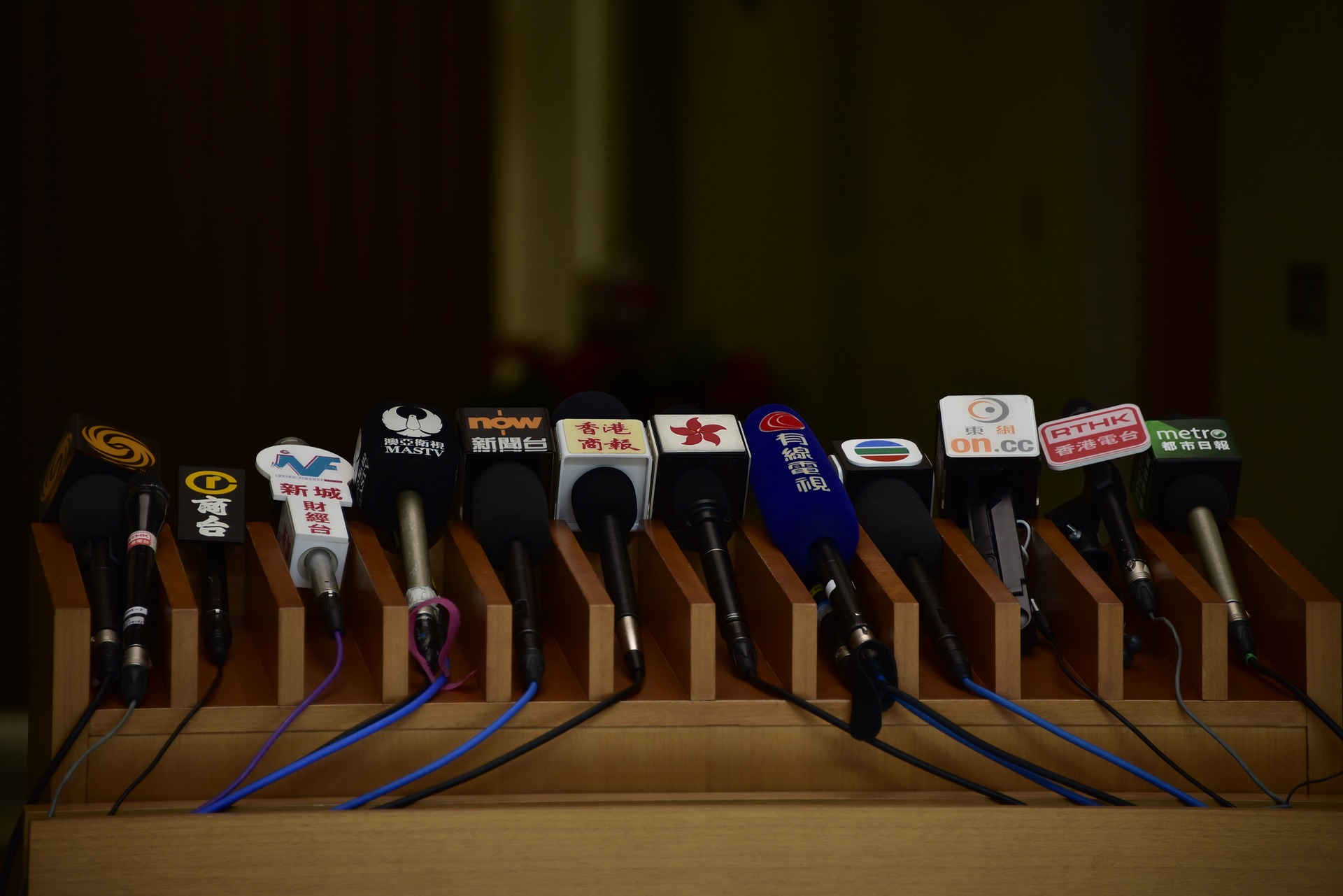Beijing Finds Its Voice: China’s Rising Media Footprint in South East Europe

China’s entry into and eventual entrenchment in South East Europe (SEE) has proceeded thus far via an apparent paradox. On one hand, it has focused on large-scale, spectacular projects in infrastructure and energy, generating a plethora of public relations images, seemingly self-evident in their portrayal of Beijing’s intent and posture. On the other, the country has been spending the last years utilizing the positional benefits of inconspicuousness throughout various societal sectors. While everyone is gazing at the immediate, tangible manifestations of engagement, much of what China is doing in the region appears to be hiding in plain sight. Meanwhile, Chinese actors and institutions have been methodically creating and strengthening ties, frameworks, and constituencies of interested parties across culture, academia, economy, and media. Images are but one element of a projected story. Thus, there is little surprise that Beijing has been striving to complement them and to find its voice in the region.
A Growing Profile
China has been active across the media sphere, busying itself with properly framing interaction with local actors and institutions. Bilaterally, this is being done through numerous cooperation agreements between state news agencies such as Xinhua, China Radio International, and local counterparts in Serbia, Bulgaria, North Macedonia, etc. This is now being expanded towards private media outlets, particularly web portals. Intermediary actors are also emerging, often serving PR and content functions on behalf of the Chinese, for instance, the SEE Business Organization (CSEBA). Multilaterally, Beijing is also creating media cooperation frameworks, creating structure and incentives for cooperation. Examples include The Belt and Road News Network and the Belt and Road Journalists’ Association. Long study visits to the country by SEE journalists and media managers are already a well-established cooperation mechanism. But the toolbox is expanding as Chinese embassies and ambassadors have increased their engagement by various means, most interestingly through working with individual journalists on a freelancing basis, seeking advice and consultancy and hiring professional media personnel to manage relations and influence local actors.
China-related content is markedly rising, albeit from a relatively low base. In some cases, such as Albania, the jump has been almost exponential. For instance, the number of BRI-related stories between 2016 and 2019 has gone up from 42 to 184. While content is visibly positive with a distinct lack of more analytical and critical materials, this is not the most notable tendency. More importantly, this content is finding its way beyond state media outlets into private ones and into web portals with an insatiable hunger for content. It is often free and handy, a useful characteristic in an environment of declining advertising revenues. Content is increasingly planted via ‘joint projects’ which ensure that prominent platforms allow the Chinese to directly convey their messages and project their narratives. For instance, the popular Bulgarian web portal, 24 Hours, has a cooperation agreement with CRI to host a segment, Focus on China. It essentially relays unedited content, including the full speeches of President Xi. Notably, China-related content is venturing beyond politics and economics and into culture, lifestyle, cuisine, etc. The local Chinese diaspora is also gradually getting more involved in media work, commentary and visibility. In another example from Bulgaria, a Chinese businessman has established a policy institute, the Council on Economic and Diplomatic Relations, and has quickly become a prominent commentator on China affairs in all main media outlets.
More structurally, Beijing has been constructing an emerging constituency of China-interested actors and institutions, gradually coalescing and providing greater structure, purpose, and direction for its media activities. One of its pillars is the legacy community, consisting of contacts and networks dating back decades. National associations of journalists are typically such entities even if not in all countries of the region. The second pillar relates to institutional partnerships at key nodes in each country’s media systems. They include state media organizations, agencies, relevant ministries, regulatory bodies, private media outlets, etc. The third pillar is linked to an emerging and rather fluid network of new actors which perform different functions. These range from returning students with a claim to China-related expertise with greater media access, to freelancing opportunity-takers in state media who conduct commissioned research and consultancy. Owners and managers of private media outlets are also keen to take up offers of cooperation in an ever more challenging mediascape. Activities and messages across these pillars are increasingly coordinated at various levels and hubs. For instance, in Bosnia, this is being done by the Centre for Promotion and Development of BRI. In any case, while coherence and integration of efforts remain patchy across countries, there is little doubt about the direction of travel.
Lack of Transparency
Expectedly, as China has been upping its game on generating content and securing access to suitable platforms, it has continued to focus on limiting exposure on certain topics and issues. While planting information in some ways, it has sought to ensure non-information in others. Contracts with national governments and companies have been notoriously non-transparent. The most prominent and well-known case relates to the contract for the construction of the Bar-Biljare highway in Montenegro. Significantly, the main partner to the Chinese in this implicit compact for opaqueness are governing parties and politicians and state institutions. Media content about joint projects is almost invariably synchronized between the two sides and non-transparency is naturally reinforced as governments are keen to avoid exposure and knowledge of various questionable contractual provisions in many projects. Moreover, national and Chinese actors share an affinity to present activities as ‘win-win’ projects. Still, as Beijing’s footprint expands and civil societies react to unfavorable environmental and other practices by Chinese companies, there will be rising pressure to disclose full information in relation to various types of cooperation and other joint activities.
More to Come
China’s efforts to embed itself in media is facilitated by numerous structural deficiencies of the media environment in the SEE region. These range from proximity to political power, as well as the vulnerability of media owners who belong to wider political cliques and the trend of networks often integrating prominent politicians, former high-ranking officials and various businesspeople. The upending of business models and dramatic shifts in advertising markets further create openings for third country actors. Opaque ownership also generates difficulties in mapping and monitoring of editorial policy, while the fragmented media markets desperately seek financing, driven by the imperative of ever more content. More significantly, China is making a qualitative jump in engagement as it positions itself to directly acquire media organizations and purchase media space. A Chinese company already owns a newspaper in Slovenia and there has been a recent attempt to buy the main media company in Croatia. Similarly, a China-friendly Czech businessman, Mr. Petr Kellner, has bought Central European Media Enterprises, a major actor in the wider CEE media market. Suffice it to say there is enough smoke to suggest a potential fire as China-friendly content is appearing in greater quantity across an expanding range of outlets. Certainly, these acquisitions will place Beijing on the cusp of real leverage, able to directly control information flows, images, representations and narratives. Then, China will have found its voice in SEE, literally.
The article is based on a research project entitled Getting on the Radar: China’s Rising Media Presence in South East Europe funded by the Konrad-Adenauer-Stiftung Media Programme South East Europe and conducted by the European Council on Foreign Relations. The full report is available at: 0beb5c40-b6dd-7292-5cc3-fd8a5c1be824 (kas.de)
Written by
Vladimir Shopov
Vladimir Shopov is a visiting fellow with the Asia programme at the European Council on Foreign Relations. He is a consultant, researcher and columnist with 20 years of experience and has worked with numerous companies from Austria, Belgium, Germany, Spain, Sweden, UK, US and others. Shopov has also worked with the European Parliament, MEPs, the European Commission, the British Council and many other European and Asian policy and research centres. He was adviser on EU affairs to the minister of home affairs (1997-1998), counsellor at the Bulgarian mission to the EU in Brussels (1998-2001), EU adviser at the British embassy in Sofia (2002-2003) and adviser to the minister of foreign affairs (2014-2017). He is a graduate in political science and comparative politics with MA degrees from Sofia University St. Kliment of Ohrid and the London School of Economics and Political Science. He has also studied in Oxford University, London University (Queen Mary College), New School for Social Research, California State University, Peking University and King’s College London.


